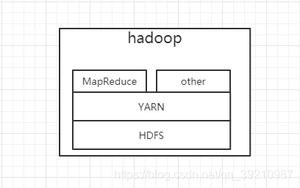在 Python 中生成 Hermite_e 多项式的伪范德蒙矩阵
要生成 Hermite_e 多项式的伪 Vandermonde 矩阵,请使用d()Python Numpy 中的 hermite_e.hermevander2。该方法返回伪范德蒙矩阵。参数 x, y 是一个点坐标数组,都是相同的形状。dtypes 将转换为 float64 或 complex128,具体取决于任何元素是否复杂。标量被转换为一维数组。参数 deg 是 [x_deg, y_deg] 形式的最大度数列表。
脚步
首先,导入所需的库 -
import numpy as npfromnumpy.polynomialimport hermite as H
使用以下方法创建点坐标数组,所有形状都相同-numpy.array()
x = np.array([1, 2])y = np.array([3, 4])
显示数组 -
print("Array1...\n",x)print("\nArray2...\n",y)
显示数据类型 -
print("\nArray1 datatype...\n",x.dtype)print("\nArray2 datatype...\n",y.dtype)
检查两个阵列的尺寸 -
print("\nDimensions of Array1...\n",x.ndim)print("\nDimensions of Array2...\n",y.ndim)
检查两个阵列的形状 -
print("\nShape of Array1...\n",x.shape)print("\nShape of Array2...\n",y.shape)
要生成 Hermite_e 多项式的伪 Vandermonde 矩阵,请使用d()Python Numpy 中的 hermite_e.hermevander2 -
x_deg, y_deg = 2, 3print("\nResult...\n",H.hermevander2d(x,y, [x_deg, y_deg]))
示例
import numpy as np输出结果fromnumpy.polynomialimport hermite_e as H
#使用 numpy.array() 方法创建所有相同形状的点坐标数组
x = np.array([1, 2])
y = np.array([3, 4])
#显示数组
print("Array1...\n",x)
print("\nArray2...\n",y)
#显示数据类型
print("\nArray1 datatype...\n",x.dtype)
print("\nArray2 datatype...\n",y.dtype)
#检查两个数组的尺寸
print("\nDimensions of Array1...\n",x.ndim)
print("\nDimensions of Array2...\n",y.ndim)
#检查两个数组的形状
print("\nShape of Array1...\n",x.shape)
print("\nShape of Array2...\n",y.shape)
#要生成 Hermite_e 多项式的伪 Vandermonde 矩阵,请使用 Python Numpy 中的 hermite_e.hermevander2d()
x_deg, y_deg = 2, 3
print("\nResult...\n",H.hermevander2d(x,y, [x_deg, y_deg]))
Array1...[1 2]
Array2...
[3 4]
Array1 datatype...
int64
Array2 datatype...
int64
Dimensions of Array1...
1
Dimensions of Array2...
1
Shape of Array1...
(2,)
Shape of Array2...
(2,)
Result...
[[ 1. 3. 8. 18. 1. 3. 8. 18. 0. 0. 0. 0.]
[ 1. 4. 15. 52. 2. 8. 30. 104. 3. 12. 45. 156.]]
以上是 在 Python 中生成 Hermite_e 多项式的伪范德蒙矩阵 的全部内容, 来源链接: utcz.com/z/297244.html




